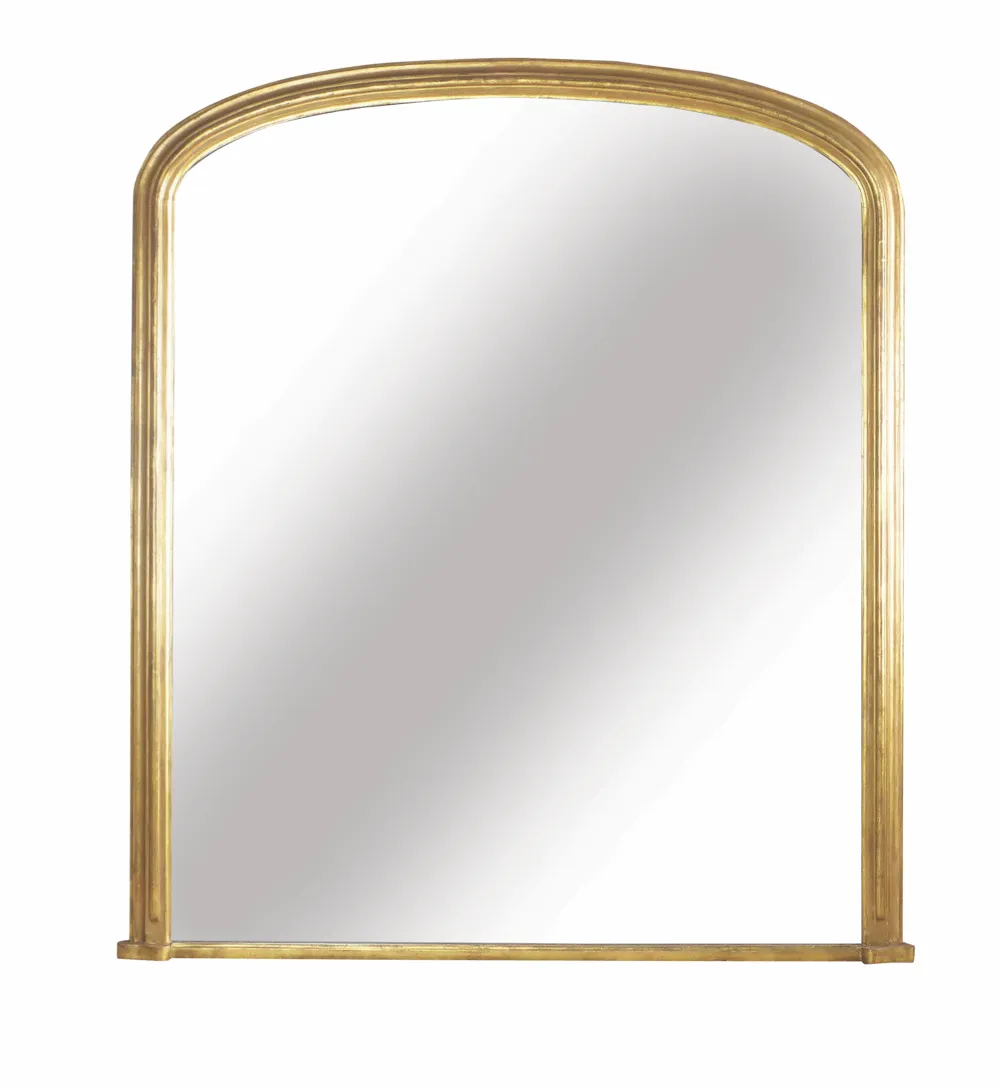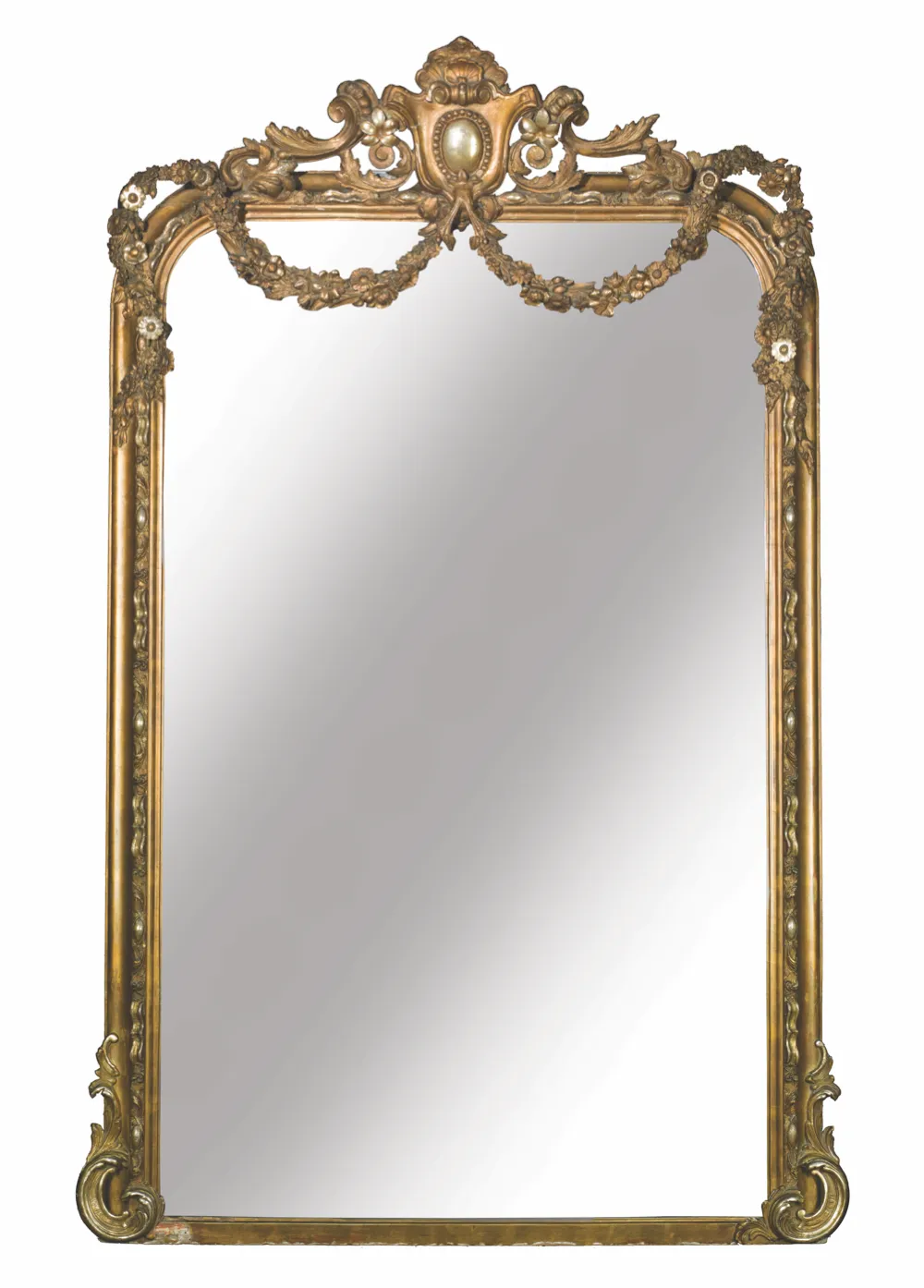A giltwood overmantel mirror brings an instant injection of elegance, light and opulence to a room. Plus, their large scale makes them eye-catching focal points. ‘They’ve been status symbols for centuries, and they still work in modern homes,’ says Laura Dadswell of Westland, London.
Mirror-making for the international market began in Venice in the 1500s, but the Venetian manufacturing process – involving blowing cylinders of glass, then cutting the ends and flattening the cylinder – limited the size of glass plates they could produce. A sea change came in the 1680s, when Bernard Perrot, a French craftsman, devised a new method of casting glass in large flat sheets. It was then cut, polished and silvered by specialist workers and set in decorated frames.

As technology progressed in the 18th century, ever larger overmantels were produced. To begin with, the French were pre-eminent, their mirrors adorning the homes of the rich in Europe. ‘Fireplaces in France were often lower than those in Britain to accommodate them,’ says Laura.
The architectural trends of the time shaped mirror styles and they were often conceived as part of a decorative scheme. Spurred on by high taxes on imported glass, British makers fought back from the mid 18th century. Thomas Chippendale and his contemporaries designed them, some adorned with paintings set in the frame above the glass. At the end of the century, Robert Adam’s designs were embellished with delicate carving and gesso neoclassical motifs.

The heavier, more austere simplicity of the Regency period was reflected in designs that often feature a strong horizontal emphasis. In the 1800s and beyond, better technology made glass production cheaper and overmantels became more widely available.
As with any antique, condition will have a bearing on price. ‘Sometimes gold paint is used to restore gilding that is worn from years of dusting, but this never has quite the same quality,’ warns Laura. ‘New glass isn’t the same either. Original glass has a shimmery glitter and areas where it’s wearing away often add to the appeal.’

The vast majority of overmantels on the market today will date from the 19th century or later. Size, decoration, as well as condition, all play a part in value. France remains a rich hunting ground – some can be found for £100 or less in brocantes. On this side of the Channel, a large early 19th-century version might be £500 plus, but earlier, grander ones rise to £3,000 or more.
You may also like...
What to consider when buying an antique overmantel mirror
1
Think about the style and scale of your fireplace– the mirror should complement, rather than overwhelm it. Ideally it should not be wider than the mantelpiece beneath, butsit within it.
2
Condition is key to value– look for original gilding and glass.
3
Grandeur– carved decoration will add to the mirror’s overall desirability, but be aware that the cost will increase.
4

